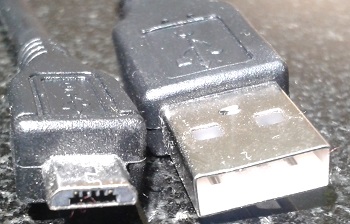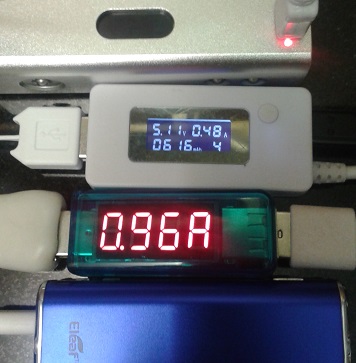USB charged batteriesThis guide is for batteries that charge via a USB socket on your device. You should ALWAYS follow the manufactures instructions and this guide is not intended to replace them. This guide has been prepared by forum members who have taken care to accurately research the information provided, but it is provided for use at your own risk and neither the forum or the members who contributed to this guide accept any responsibility or liability for the accuracy of the information or advice nor for any consequence that result from following the advice.
Many people like to use a separate USB power supply and these are often incorrectly
refereed referred to as chargers, we will only refer to them as power supply
if in this guide.
Do's and Don'ts• NEVER leave a Li-ion battery charging unattended or charge while sleeping (these batteries do not have a memory effect so just disconnect and charge them again later).
• NEVER leave an e-cig or e-liquid where pets or young children can get to it.
• NEVER leave your battery in direct sunlight or in other hot locations like your car or near the cooker.
• NEVER charge in temperatures below 5 °C, this will affect the long-term safety of you battery.
• NEVER charge in temperatures above 35 °C, this risks starting a fire.
• NEVER charge with a lead or power supply that is damaged.
• NEVER charge near heat sources like a hob, dishwasher or strong light source, including in your car in bright sunlight.
• NEVER charge near flammable items like curtains, soft furnishing or paper.
• NEVER charge where your battery or power supply could get wet E.G next to the kitchen sink.
• ALWAYS disconnect your battery from the power supply as soon as it is charged E.G. light turns green, and unplug the power supply from the mains.
• ALWAYS charge on a non-flammable surface like a ceramic plate or in a LiPo safety pouch.
• ALWAYS charge in an area where there is a smoke alarm.
• ALWAYS use your battery's on/off or lock function when you put it in a bag or pocket, before storing or charging and especially when small children are about.
• ALWAYS dispose of old or damaged batteries safely. Do no
t bin them. Ask your local council where to take them, usually it will be one of their own facilities.
ALWAYS dispose of your battery if:• It becomes unusually hot, they can get warm especially when you keep them in you hand during use.
• It has been damaged I.E. dented or punctured, leaks any liquid or emits any strange odours.
• It has been submerged or dropped into water, DO NOT charge the battery even if you have dried it out.
• It does not hold a charge overnight.
• It has lost significant capacity.
Tips• Store your batteries in a non-conductive container in a cool place away from flammable materials, ideally at around 40% charge for longer term storage, but never store them when fully discharged for long.
• Keep a record of the date you obtained each battery as it will help you predict when they are coming to the end of their life.
• Unscrewing your atomiser adds an extra level of safety over locking your battery when carrying in a bag or pocket.
• Let your battery rest for an hour or two after charging if possible.
• Your batteries do not like the cold, they will not work well in freezing conditions.
• Having more than one battery not only gives you a backup but allows more flexibility and makes it easier to find a convenient time to charge the spare while you can be there in case anything goes wrong.
Charging set upYou need 3 things to charge these batteries:
1) the battery or device, which contains a battery cell, a switch and a circuit that provides some protection and maybe power regulation.
2) the cable, a USB cable almost all devices use a standard Micro-B-USB male to USB-A male cable the same as the EU have standardised for mobile phone charging.

3) a power supply, this could be a USB socket on your computer, a USB hub or a USB power supply that plugs into the mains (sometimes called a wall wart) or into a car cigar lighter socket. Some include the Micro USB cable.
These batteries now come a large range of sizes and all should only be charge
d from a USB socket or power supply rated at 5 V DC, the voltage should always be rated at 5 V for USB. Some of the newer and larger batteries can use more than the standard USB 1 & 2 current (amps or milliamps) of 500 mA or 0.5 A (USB 3 is 0.9 A standard and 1.5 A for dedicated charging ports).

These will charge more quickly with a higher current USB power supply like the one that
comes? with your SmartPhone
, a reasonable quality battery will only take what it needs. Beware of cheap and fake USB power supplies and only buy from a reputable vendor who will only sell CE marked UK specific units.
Can I use any USB power supply to charge my e-cig?Yes, in an ideal world any reasonable quality USB power supply should safely power your reasonable quality e-cig for charging. Obviously if either is faulty this is not the case. You can give yourself an extra level of safety by sticking to a USB supply rated at 5 V DC and a close to the max charge current quoted by your devices manufacture, this should be clearly printed on the label of the power supply. I always check how much current my devices are using with a USB metre available for 1 to 4 pounds on the WWW, a popular cheap one is the "USB Charge Doctor" (blue one in the photo).

These are extremely easy to use and can give you piece of mind that the battery is not using too much current when attached to a higher than standard current supply, well worth a pound or two especially with cheap devices that may be copies. Note the battery should only draw the max current for the first phase of charging which could be 3/4 or more of the total time then the current should lower to zero over the last 40 minutes to an hour. One of the most import things is that it stops charging when full as continuing to provide current to the cell will damage it and can cause thermal runaway (dangerous see below).
How do I know what current (amps) my battery should be charged at?If you don't know how much charge current your device is rated at go by the manufactures information and if you cant find this ask the vendor you obtained it from and as a last resort ask on the forum or search the WWW. If you still can't find it assume it is 0.4 times the mAh rating (0.5
C rate adjusted for 5 V) so a 1000 mAh battery should draw around 400 mA from USB.
Pass through modeThis is using your battery to vape while being charged and should only ever be done if the manufacture states your battery supports it. When used like this power is still being taken from the battery as USB is only 2.5 W and this can shorten the life span of your battery.
Charging your eCigChoose a sensible location away from any heat sources like radiators, washing machines or direct sunlight and put your battery on a flame proof surface a ceramic plate before you start. If you have the manufactures guidance on charging then follow that, but usually you turn off your battery, connect it to the power supply and turn on the mains power if it is mains powered. Some devices have a screen that will show the charge progress in a battery graphic and some just have a multicoloured status LED. The exact meaning of LED colour codes and flashes varies
form from model to model and there should be information from the vendor or manufactures about what means.
If you need to leave the room where yo
u're charging for more than a few minutes it is safe
r to turn the mains to the charger off and disconnect the battery, you can resume charging when you get back and it won't shorten the life of your battery. If you are unwilling to do this then consider a LiPo Safe or LiPo Guard charging pouch that will provide some protection in the event the battery vents, flames
of or explodes and charge in a room with a smoke alarm.
Once charging is complete disconnect everything and ensure your battery is turned off, if you have another battery that is only half empty it may be more convenient to charge that now if you are going to be out and about later.
Thermal runaway in Li-ion batteriesLi-ion batteries contain flammable material, store very high levels of energy are some are pressurised. If overheated they can suffer thermal runaway producing a dangerous build up of extremely hot flammable gases. Cylindrical metal cased Li batteries normally feature a pressure release safety valve that will allow these gases and possibly liquid to escape before the casing ruptures, known as
venting and even flames in extreme cases
flaming, but if the pressure valve fails to open or is not included a rapid disassembly (explosion) can result. Flat LiPo batteries as used in many integral battery devices do not have a safety pressure relief value so will not explode, but can vent quite large flames and they could cause the device to explode if it does not have sufficient venting provision. If venting occurs the hot spots inside the battery can potentially continue to heat until the battery combusts or dissembles (explodes).
Thermal runaway can be caused by drawing too high current from the battery this could be a short circuit or running at too high wattage, charging the battery at too high current, charging the battery above it's maximum voltage, heating the battery, physical damage or shock to the battery amongst other causes. Manufacturing defects and poor design can also cause thermal runaway at any time so it is important not to risk using low quality batteries and always purchase from trusted vendors to avoid counterfeits. There are also features the best manufactures build into LiIon batteries that reduce the risks. There are other potential factors that can cause thermal runaway mentioned in the do's and don'ts section above.
If your battery does get too hot take it outdoors and leave it in a safe place to cool if possible and keep pets away from it, then dispose of it once cool. If your battery flames or catches fire use a dry content fire extinguisher if possible or if not available water (be careful of electrical hazards such as a charger still connected to the mains). The FAA recommend immersing it in water to
o cool a burning battery, but
RCHARGE warn of electrical hazards from large battery packs and surrounding equipment.
Further informationSafety Concerns with Li-ion Batteries – Battery UniversityCharging Lithium-ion Batteries – Battery UniversityHow to Prolong Lithium-based Batteries – Battery UniversityCharging from a USB Port - Battery UniversityEEVblog #176 - Lithium IonPolymer Battery Charging Tutorial - YouTube